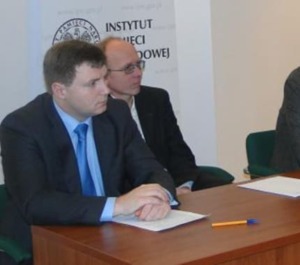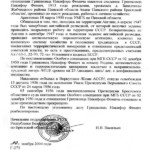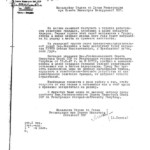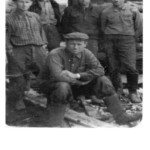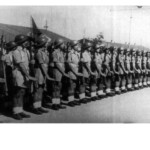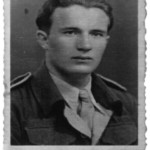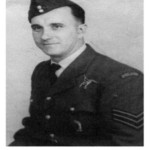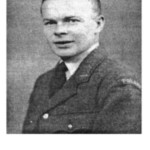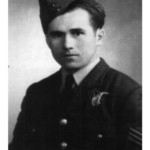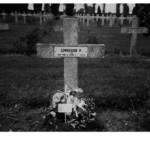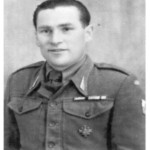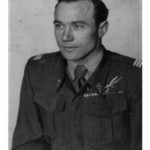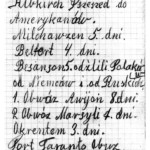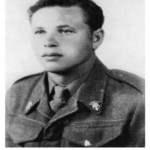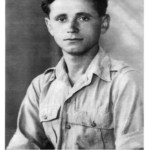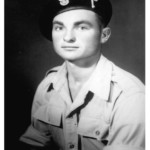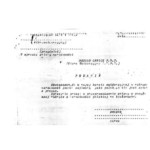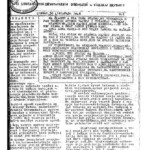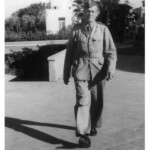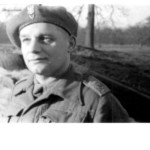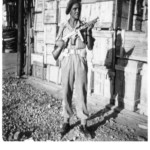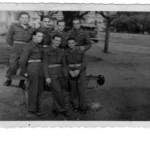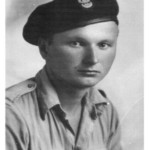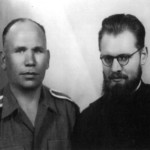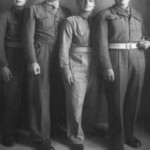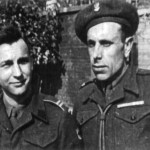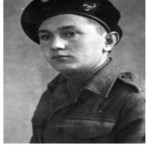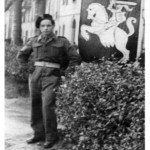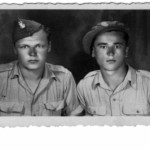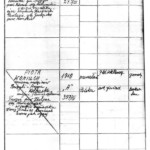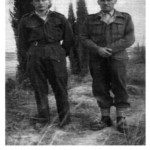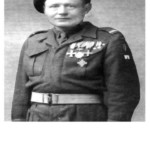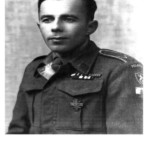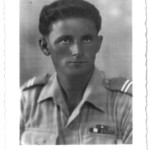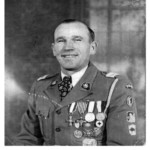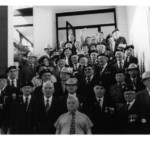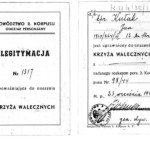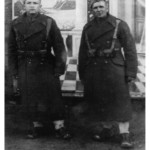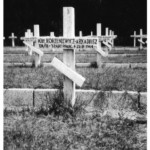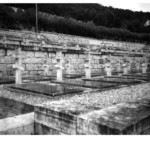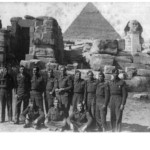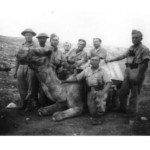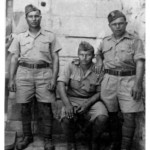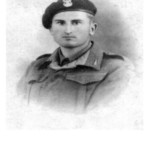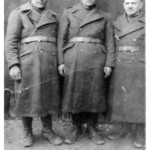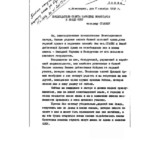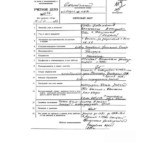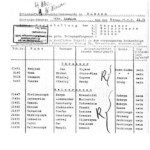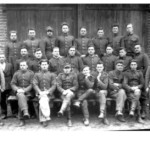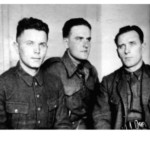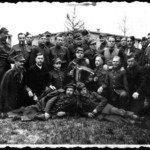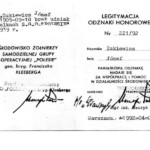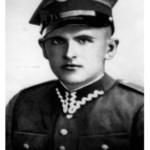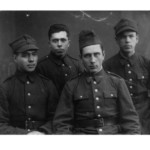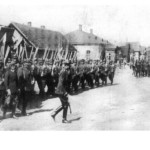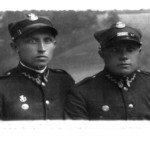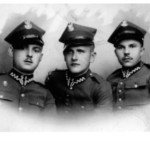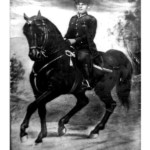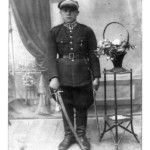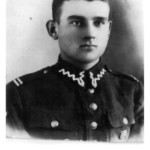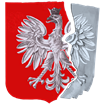
Belarusians in Polish regular military formations
1918 – 1945
Exhibition Curator
DR JERZY GRZYBOWSKI
Jerzy Grzybowski (born 1979), historian, doctor. Assistant professor at the Department of Intercultural Studies in Central and Eastern Europe at the University of Warsaw. He specializes in the history of Polish-Belarusian relations during the Second World War and after its end. He also deals with the military history of Poland and Belarus in the 20th century. He is the author of over 100 scientific publications in Belarus, Poland, the USA, Germany and Russia, incl. books Belarusians in regular Polish military formations in the years 1918–1945 (Warsaw 2007). Honored by the head of the Office for Veterans and Victims of Oppression with the Pro Memoria medal (2005).
FOREWORD BY THE CURATOR

There are many areas in mutual Polish-Belarusian relations in the 20th century that require in-depth research. Until recently, this list also included the service of Polish citizens of Belarusian nationality in the Polish Army during World War II. During the Soviet period, it was forbidden to say that Belarusians served their Polish Homeland. This state of affairs was due to the fact that the very notion of World War II was ideologized in Soviet historiography. They were replaced with the term “Great Patriotic War of the Soviet Nation”, which for Moscow propaganda began not in 1939, but in 1941 – with the attack of Nazi Germany on the USSR. According to the communist ideology, in this war the Belarusian people could only participate in the ranks of the Red Army and the Soviet partisans. Even the thought that its representatives could fight alongside forces other than the USSR was not admitted. Therefore, the former participants of the 1939 campaign and soldiers of the Polish Armed Forces (PES), who lived in Soviet Belarus after the war, were deprived of the status of combatants – all the benefits and privileges enjoyed by the former Red Army soldiers. They were even deprived of the right to be called a “participant in the war” and attempts were made to erase the memory of their deeds from the pages of history. It often happened that despite their heroism, decorations or wounds sustained in combat, their Soviet military books contained the annotation: “he did not take part in military operations”.
Former soldiers of the Polish Armed Forces in the West suffered the most. In the post-war period, about 1,000 people returned to Belarus as part of repatriation. former Polish Armed Forces soldiers – most of them were Belarusians. The peak of persecution by the communist authorities against these people occurred in the spring of 1951, when the communist repression apparatus deported all the families of the so-called “Andersowców” into the depths of the USSR (and Poles and Belarusians), because they did not fit into the artificial, created by the Soviet authorities, pattern – a Soviet patriot, the hero of the so-called Great Patriotic War. They adhered to different moral principles, different from the current views, they perceived the world differently. Therefore, they were considered unnecessary to the Soviet society.
Contrary to the claims of Soviet historiography, many Belarusians fought and died wearing the uniform of a Polish soldier. Pursuant to the Constitution of March 17, 1921, Polish citizens of Belarusian nationality were obliged to serve in the army. In terms of the number of soldiers, Belarusians were the second (after Ukrainians) nationality in the Polish Army, taking into account recruits coming from national minorities. Their share ranged from 4% to 10% of the manpower of the army of the Second Polish Republic. The largest number of Belarusians in the Polish Army during the peacetime was recorded in 1923, when it amounted to over 24,000. people. On the eve of World War II, their number increased dramatically.
In the armed forces of Poland, at the time of the 1939 campaign, there were about 70,000. citizens of Belarusian nationality. Belarusian peasants from the Vilnius, Nowogródek and Polesie regions, wearing hats with an eagle, showed sacrifice and courage on the battlefield: in defense of Warsaw, the Brest Fortress, near Bzura, near Kock, in defense of Westerplatte and in many other places where a Polish soldier fought at that time. Most of them met the fate of prisoners – many were captured by the Germans (approx. 25,000) and the Soviet (approx. 20-25,000). Of the latter, some were murdered in the Katyn pits. Thousands of Belarusians served in the Polish Armed Forces – their exact number is impossible to establish – which they reached via various routes. Most of them were former prisoners and prisoners of Soviet camps and camps, who in 1942, together with Anders’ army, evacuated from the USSR to Iran. At this point, it is worth emphasizing that in the years 1939 – 1941 from the north-eastern territories of the Second Polish Republic to the depths of the Soviet Union, about 20-25 thousand people were deported (apart from other exiles). Polish citizens of Belarusian nationality. Only some of them managed to join the Polish Army under the command of General Władysław Anders. The PES also included Belarusians, who were often forcibly conscripted into the Red Army in 1940-1941. Upon learning of the formation of Anders’ army, they volunteered for Polish units, contrary to the prohibitions of the Soviet authorities. A separate group of Belarusians in the Polish Armed Forces were former – often forcibly conscripted – soldiers of armed formations in the German service, who in the autumn of 1944 found themselves in Allied captivity and then enlisted in the Polish Army. A certain group of the Polish Armed Forces were also Belarusian volunteers from South American countries, who supported Polish units stationed in the British Isles. The soldiers of Belarusian nationality, like Poles, proved to be very brave soldiers. They marked their participation in the fighting with graves in the necropolises of Monte Cassino, Bologna, Loreto, and in war cemeteries in
France, Belgium, the Netherlands. It is full of reports and reports by their commanders, in which their superiors did not spare their praise for their subordinates of Belarusian nationality. There are also known names of Polish citizens of Belarusian nationality honored with high military decorations, including the Order of Virtuti Militari.
Our exhibition presents the successive stages of the participation of Belarusians in individual, Polish, regular military formations – participation in the war of 1939 and the Polish Armed Forces. It was also impossible to ignore the German and Soviet slavery experienced by Belarusians and the cruel repressions of the communist regime to which former soldiers were subjected after their return to their homelands – the former Eastern Borderlands of the Second Polish Republic.
The participation of soldiers of Belarusian nationality in the Polish army during World War II is a true testimony of the military and human solidarity of Poles and Belarusians in the fight against common enemies. This is another proof that the fates of both nations intertwined and in the hour of trial they were the blood-sanctified expression of true brotherhood in arms.
Dr. Jerzy Grzybowski
Warsaw, November 11, 2010
